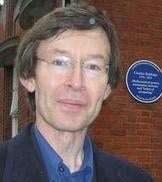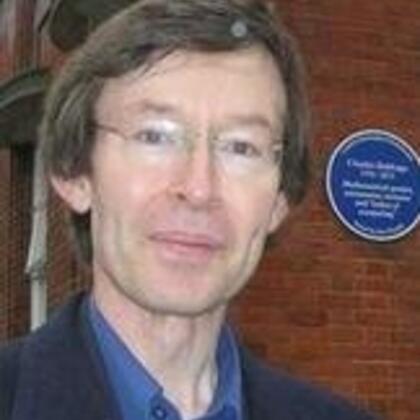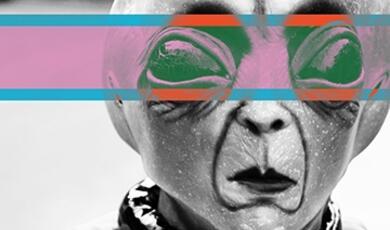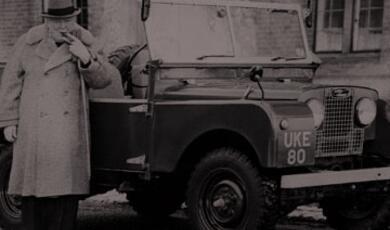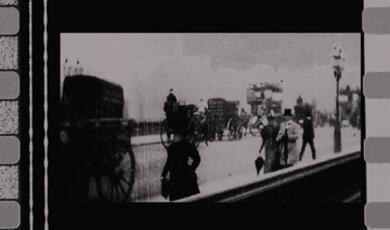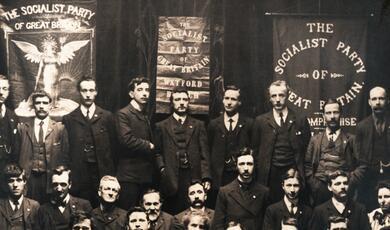31 October 2013
Alan Turing:
The Founder of Computer Science
Professor Jonathan P. Bowen
Alan Mathison Turing, OBE, FRS, has a rightful claim to the title of father of modern computing. He laid the theoretical groundwork for a universal machine that models a computer in its most general form before World War II. During the war, Turing was instrumental in developing and influencing actual computing devices that have been said to have shortened the war by up to two years by decoding encrypted enemy messages that were believed by others to be unbreakable. Unlike some theoreticians, he was willing to be involved with practical aspects, and was as happy to wield a soldering iron as he was to wrestle with a mathematical problem, normally from a unique angle compared to others.
Turing’s seminal paper On Computable Numbers with an Application to the Entscheidungsproblem (1936), with hindsight, foretold the capabilities of the modern computer. WWII brought about a radical but perhaps fortuitous change of direction in Turing’s career. His unique mathematical abilities were recognized during his time at Cambridge and he was invited to join Bletchley Park, the secret centre of the United Kingdom’s efforts to break German codes. Decryption was laborious to do by hand in the time needed and Turing recognized that machines, together with great human ingenuity, could tackle the problem far more quickly and reliably.
Alan Mathison Turing was born on 23 June 1912, the son of an Indian civil servant. His parents returned to England for his birth in Maida Vale, London. At the age of 14, Turing was sent to Sherborne School in Dorset, southern England, a traditional British public school. His interest in science was noted by his school teachers, but not particularly encouraged at such a conservative establishment. He was able to solve advanced problems from first principles, without having been taught calculus, for example. At 16, he encountered and understood the work of Albert Einstein. While at school, Turing formed a close friendship with a fellow student who unfortunately died during his last term at Sherborne. This had a traumatic effect on Turing and any religious leanings Turing had were destroyed, making him atheistic subsequently.
Turing went on to study mathematics at King’s College, Cambridge, from 1931 to 1934, graduating with a first class degree. He was subsequently elected a fellow of the college. In 1936, he submitted his groundbreaking paper on computable numbers that was to form the cornerstone for the rest of his career. This presented the concept of computing machines and in particular a universal machine, capable of computing a wide class of numbers. Turing’s notion of universality is what is thought of as programmability in computers today. As he stated in a paper published in 1939, in the context of a human computer, ‘a man provided with paper, pencil, and rubber, and subject to strict discipline, is in effect a universal machine.’
Turing’s efforts developed the 1931 research of the German mathematician Kurt Gödel and have led to the use of the term Turing machine for his universal machine. He demonstrated that any mathematical calculation that can be represented as an algorithm can be performed by such a machine. The Entscheidungsproblem was a mathematical challenge posed by David Hilbert in 1928 as to whether there is always an algorithm that can determine the truth or falsity of a mathematical statement. Turing also demonstrated the insolubility of the problem by first showing that it is impossible to decide algorithmically whether a given Turing machine is satisfactory. This is now known as the halting problem and the issue was a vexing one to mathematicians. Turing machines remain a very important concept in the theory of computation to this day.
From 1936 to 1938, Turing studied under the American mathematician Alonzo Church at Princeton University, obtaining his doctorate in a remarkably short period. Earlier, they had independently developed the Church-Turing thesis, characterizing the nature of computation, stating that every effectively calculable function produced through any means is also computable using a Turing machine. Although the thesis cannot be proved, it is almost universally accepted by mathematicians and theoretical computer scientists. Turing returned to Cambridge and attended lectures by the philosopher Ludwig Wittgenstein about mathematical foundations. Wittgenstein argued that mathematics invented rather than discovered truth, but Turing disagreed.
Turing was recruited to Bletchley Park, after working part-time for the Government Code and Cypher School (now known as the Government Communications Headquarters or GCHQ). Before the war, he had already contributed ideas on breaking the German Enigma machine for encrypting messages. This meant that within weeks of joining Bletchley Park, he had specified a machine that could be used to help decode Enigma messages. This was named the bombe after an earlier, less efficient Polish-designed machine, the bomba.
The bombe worked by taking a piece of likely plain text from the original message (known as a ‘crib’) and working through combinations of the Enigma machine’s rotors and plugboard settings. Most possible settings would quickly produce contradictions, allowing them to be eliminated, leaving only a few combinations to be investigated in greater depth. The machine effectively undertook a mathematical proof mechanically, far more quickly and reliably that a human, or even a team of humans, could.
Turing chose to work on naval Enigma decryption because, as he said, ‘no one else was doing anything about it and I could have it to myself.’ This was typical of Turing, although he collaborated well with others at Bletchley Park too. He developed a number of novel decryption techniques and devices during his time at Bletchley Park. These were often give playful slang terms. One of these, developed in 1942, was ‘Turingery’ or ‘Turingismus’, a hand technique for finding patterns in the Lorenz cipher wheel cams. It was especially useful because the information remained valid for a significant period.
Some of Turing’s eccentricities were evident while he worked at Bletchley Park. He chained his cup to his radiator in his office to avoid it being lost or stolen. He was also known to wear his gas mask while cycling to work, not because of fear of being gassed, but to avoid hay fever.
Although not directly involved with others, Turing’s influence on work at Bletchley Park helped in the development of the world’s first programmable digital electronic computer there, the Colossus. Turing was awarded the OBE in 1945 for his war work, but his contribution remained secret for many years.
After the war, from 1945–47, Turing worked at the National Physical Laboratory west of London. Here he worked on the design of the Automatic Computing Engine (ACE), an early computer. Unfortunately delays meant that even the cut-down Pilot ACE was not built until after he left in order to return to Cambridge for a sabbatical year.
In 1948, Turing joined the Mathematics Department at the University of Manchester. He was appointed the deputy director of the computing laboratory at the university, working on software for the Manchester Mark 1, an early stored-program computer. Turing continued to consider more theoretical and abstract ideas, including the concept now know as artificial intelligence, in which he explored whether a machine can think. He devised the Turing test as a possible demonstration of machine intelligence: to pass the test, a computing machine must appear human when interacting with a person, in such a way that it is indistinguishable from a real human being. Such a feat has still not been achieved, although it is deemed to be a viable aim and remains relevant to this day. In fact, there is now a whole raft of variants of the test.
From 1952 until his death in 1954, Turing worked in the interdisciplinary area of mathematical biology and specifically morphogenesis, the process that allows organisms to generate their shape. Much of this work was not published until his collected papers appeared in 1992.
Turing was a homosexual at the time when homosexuality was illegal in the United Kingdom. He was charged with gross indecency in 1952 and lost his security clearance as a result. He was forced to take female hormones in an attempt to ‘cure’ him. On 8 June 1954, Turing was found at home by his cleaner, the day after his death. The cause of death was cyanide poisoning, believed to be via a half-eaten apple found by his bed, but this was never tested. It was determined that he had committed suicide, although it is possible that his death was an accident.
Earlier that year, in a postcard to the mathematician Robin Gandy, Turing had written: ‘Hyperboloids of wondrous Light; Rolling for aye through Space and Time; Harbour those Waves which somehow Might; Play out God's holy pantomime’, an apposite epitaph. Geoffrey Jefferson, Professor of Neurosurgery at Manchester, aptly described Turing as a ‘sort of scientific Shelley’.
Turing was made a Fellow of the Royal Society in 1951, but the real recognition of his contribution came long after his death. There is now a memorial statue in Manchester and another unique slate statue at Bletchley Park. There are blue plaques marking his London birthplace and home where he died in Wilmslow, Cheshire. In 2009, there was even a UK government apology for his official treatment. Perhaps most fittingly, the nearest equivalent to the Nobel Prize given annually to an outstanding computer scientist is known as the A. M. Turing Award. Despite his untimely death at only 41, Alan Turing’s influence will live on for the foreseeable future in the field of computing.
© Professor Jonathan Bowen 2013
Bibliography
Copeland, B. Jack (editor), The Essential Turing, Oxford: Clarendon Press, 2004.
Copeland, B. Jack (editor), Alan Turing’s Automatic Computing Engine, Oxford: Oxford University Press, 2005.
Copeland, B. Jack, Alan Turing: Pioneer of the Information Age, Oxford: Oxford University Press, 2012.
Copeland, B. Jack, et al., Colossus: The Secrets of Bletchley Park’s Codebreaking Computers, Oxford: Oxford University Press, 2006.
Hodges, Andrew, Alan Turing: The Enigma, London: Burnett / New York: Simon and Schuster, 1983. (Centenary edition, Princeton: Princeton University Press, 2012.)
Lavington, Simon (editor), Alan Turing and his Contemporaries, Swindon: British Informatics Society, 2012.
Numerico, Teresa, Alan Turing e L’Intelligenza della Macchine, Milan: FrancoAndeli, 2005.
Petzold, Charles, The Annotated Turing: A Guided Tour through Alan Turing's Historic Paper on Computability and the Turing Machine, Chichester: John Wiley & Sons, 2008.
Turing, Sara, Alan M. Turing, Cambridge: W. Heffer, 1959. (Centenary edition, Cambridge: Cambridge University Press, 2012.)
Yates, David M., Turing’s Legacy: A history of computing at the National Physical Laboratory 1945–1995, London: Science Museum, 1997.
Further references
* Bowen, Jonathan P., Alan Turing. In Andrew Robinson (editor), The Scientists: An epic of discovery, pages 70–75, London: Thames & Hudson, 2012. (Shortened version of this note.)
Morris, F. L. and Jones, C. B., An Early Program Proof by Alan Turing. IEEE Annuals of the History of Computing, Volume 6, Number 2, pages 139–143, April 1984. DOI: 10.1109/MAHC.1984.10017
Newman, M. H. A., Alan Mathison Turing, 1912–1954, Biographical Memoirs of Fellows of the Royal Society, Volume 1, pages 253–263, November 1955. DOI: 10.1098/rsbm.1955.0019
Turing, Alan, On Computable Numbers with an Application to the Entscheidungsproblem. Proceedings of the London Mathematical Society, Series 2, Volume 42, Number 1, pages 230–265, 1937. DOI: 10.1112/plms/s2-42.1.230


 Login
Login
